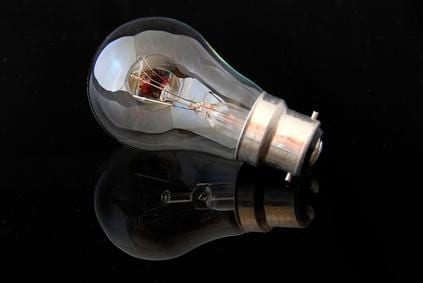Former President Jimmy Carter may have said it best: The best way to conserve energy is to not use so much of it. Americans use 24 percent of the world’s energy and only make up 5 percent of the world’s total population, according to Mindfully.org. In fact, on average, one American uses more energy than 370 Ethiopians. Fortunately, some simple things can be done around the house that are not only practical, but they also conserve energy.
Monitor Your Thermostat
One of the best ways to conserve energy is to reduce the temperature in your home, according to TLC Home. Turning down the thermostat reduces the temperature in your home. The lower the temperature, the less heating fuel is required to maintain it. Even reducing the temperature by a degree or two can conserve a significant amount of energy. You can save even more energy by using an automated thermostat with your heating system. Heating your home to 68 degrees F or cooler, and using the thermostat fan on the automatic setting, is considered one of the top 10 energy savings tips from the Florida Power & Light Company.
Check Your Lighting
Replacing traditional, incandescent light bulbs with Energy Star-qualified compact fluorescent light bulbs can reduce energy consumption by up to 75 percent per light bulb. Turning off the lights when the room is not occupied is another way to conserve energy. Replacing outdoor floodlights with energy-saving floodlights and using solar powered walkway lights are other ways you can reduce energy use in your home.
Look for Drafts and Leaks
Sealing and insulating your home is one of the best ways to make a home more energy efficient. Adding insulation to your attic, plugging holes in the wall, repairing leaking window frames, and sealing leaky switch plates, outlets and gaps along the baseboard can help prevent you from losing energy in your home. While some repairs may require a professional, most small cracks and holes can be repaired by using caulking or weather stripping. For leaking windows, plastic shrink wrap can be used to secure a tight seal. Fixing places where air leaks into and out of your home can potentially reduce energy use by 5 to 30 percent per year, according to the U.S. Department of Energy.





